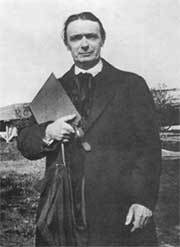
Dr Rudolf Steiner: pioneer
Rudolf Steiner: biodynamics
Lilly and Eugen Kolisko
May E Bruce
Hugo Erbe
Glen Atkinson
Enzo Nastati
Konrad Wurthle
GSR Murthy
Vaikunthanath Das Kaviraj
Iftikhar Waris
Others ...When Rudolf Steiner presented lectures about his super-sensible research, he rarely gave anything as direct as a recipe. It was much more common that basic principles of the subject at hand were described from several different angles without a fanfare to mark the transition from one approach to another.
So it is remarkable that Dr Steiner gave the gathered farmers and gardeners the recipes of the 'preparations', as he did in his fourth and fifth lectures at Koberwitz at Whitsun 1924. I wish someone had been brave enough to ask him to go even further into the basic principles because, despite the accompanying explanations, these preparations are as enigmatic as anything Steiner presented. Until one is intimately familiar with the principles one could easily think that sage and onion put in a turkey's abdomen, left in the warmth of an oven for some hours at the start of the holy nights, is a valid preparation. How can one really be creative with these if one doesn't grasp their basic principles?
There is a lot of research on the 'classical' preparations, some of which can be accessed via the forum or the bibliography. There have been long-term trials which emerge in BD's favour.
It is the usual practice for BD preparations to be made on the farms that use them, or to be made regionally and shared out amongst the associated growers. Some can be had from national and local associations. In Europe, all activity with the preparations is increasingly threatened by legislation (Regulation (EC) 1774/2002) that erupted from BSE and foot and mouth. If it weren't so sad this would be funny;- for many, the approach which would address these problems in a sane way, is the one being threatened! It is a massive subject; I cannot do more than sketch in some factual aspects.
Previously there has been no need to call one of the offshoots of Steiner's work 'classical' biodynamics because there has only really been that one school - admittedly one containing a breadth of practice and opinion. But if I am to differentiate the newer creativity from the older this seems a reasonable, neutral and non-pejorative phrase to use.
The 'classical' biodynamic preparations are usually known by the names given them in 1928 when they were being investigated by early BD experimenters keeping their cards close to their chests. These are the numbers 500 - 507, plus '508' which some argue is not a preparation and others that it is the most important and neglected. There is a lot of literature on the detail of the classical preparations so I will just take 500 as an example to give a flavour.
500 - take a well-developed horn from a cow who has had a calf, fill it full of firm and fresh cow manure. Bury it a foot or so down beneath a rich soil over the winter. Identify the site well! Exhume it around Easter (N Hemisphere) and, for each acre, about 50 grams of what comes out is put into about 20 litres of water and stirred vigorously for an hour. Make sure there are vortices one way and then the other which reach to the base of the bucket or barrel, and interrupt them vigorously to change direction. After stirring, take this to your land and sprinkle it over the soil. (How many of you are thinking, "Why didn't I think of that?") 500 is sprayed when soil cultivation is taking place and before new crops are planted. It is thought to act primarily upon the soil and roots. Maria Thun is of the opinion that Horn Manure preparation should only be applied when sowing or transplanting. (See here for reported results.)
501 - uses finely crushed crystalline silica in a cow's horn and is buried in the soil over summer until Michaelmas. Much less is used in the stirring and it tends to be used in the foliage to increase its use of sunlight. Together, 500 and 501 are known as the 'field sprays'. (Reported results.)
502 - 507 The 'compost preparations'. A pinch of each of the following are placed in holes bored along manure and compost heaps. (Reported results.)
- 502 - Yarrow (Achillea Millefolium) flowers are stitched into a stag's bladder and hung up over summer. These are then buried over winter. (Reported results.)
- 503 - Chamomile (Matricaria Chamomilla) flowers are stuffed into the small intestine of a cow like sausages. These are buried over winter and then exhumed. (Reported results.)
- 504 - nettle (Urtica dioica) is buried in the soil for a year from June to June. (Reported results.)
- 505 - Oak bark (Quercus robur) is kept in a domestic animal's skull and left under flowing water and organic sludge over winter. (Reported results.)
- 506 - dandelion (Taraxacum officinale) flowers are wrapped in a cow's mesentery and buried over winter. (Reported results.)
- 507 - the juice from valerian (Valeriana officinalis) is squeezed out and sprinkled over the heaps when they are created. (Reported results.)
'508' - Equisetum arvense is boiled for 15 minutes and cooled, diluted and sprayed to minimise fungal infestation. (Reported results.)
